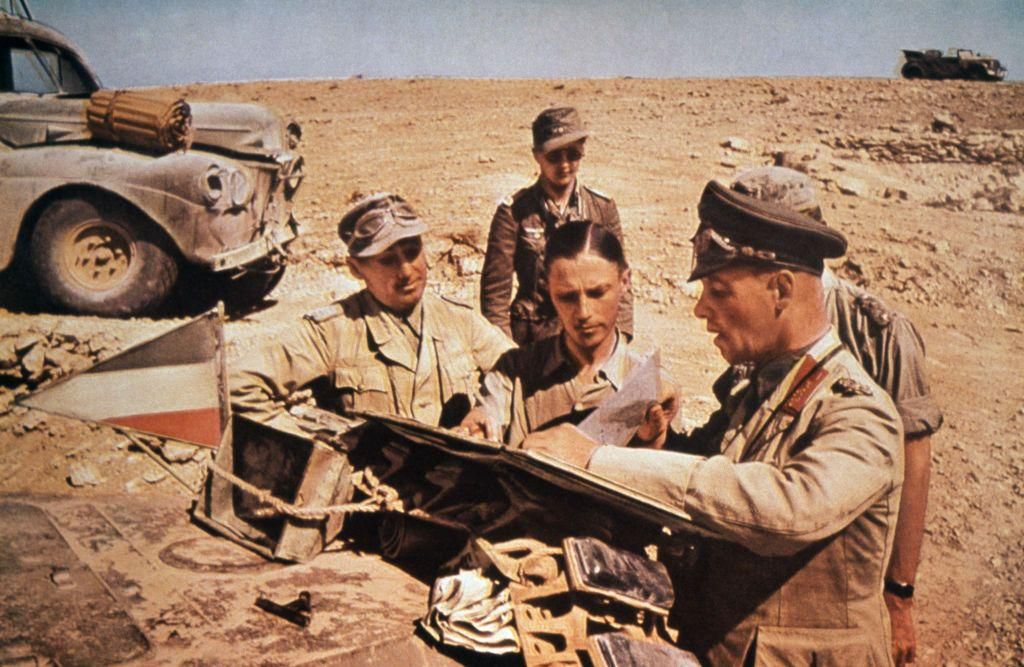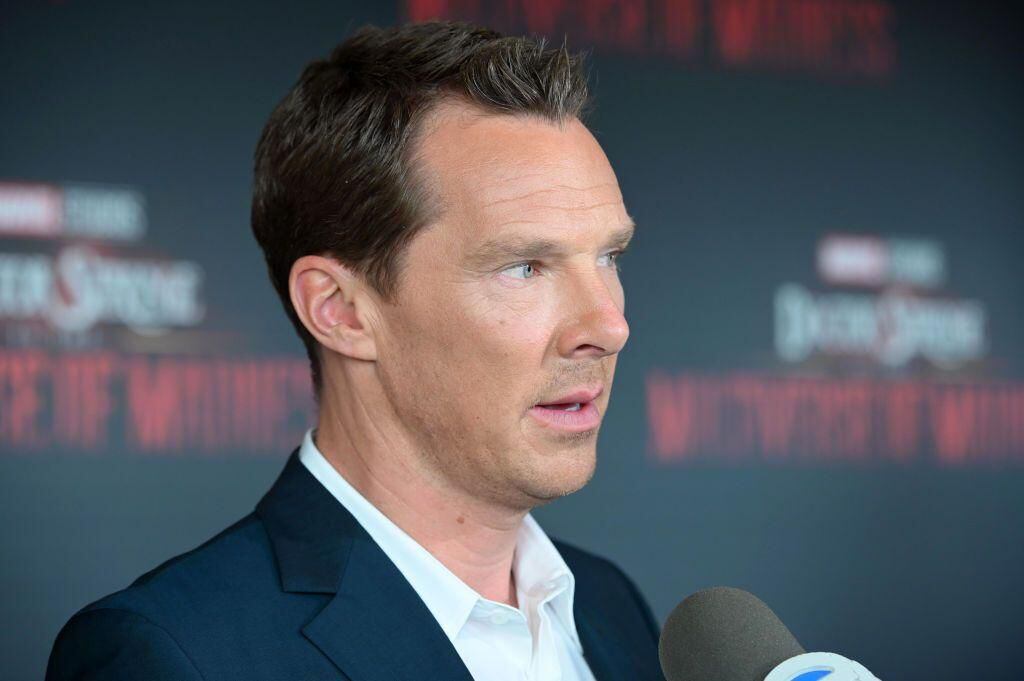In the 1930s, Jasper Maskelyne was a superstar magician who performed to crowds in theaters. UK.
A 1931 poster from his time at the London Palladium called him “England’s greatest illusionist.”
LOOK: “It is an unprecedented insurrection movement”: what is happening in New Caledonia, a French territory in the Pacific
Truth be told, he was rather dapper, with a touch of Errol Flynn in his thin mustache and piercing eyes.
Agile too, based on evidence from a 1937 Pathé film in which he appears to swallow a dozen razor blades. Less agile were the jokes he told in front of the camera: “Very cool when they’re fresh, you know?”
Maskelyne’s biggest mistake, however, was carried out in a theater very different from the one he frequented: the desert near Cairo during World War II.
In his revealing 1949 memoir, entitled “Magic: Top Secret”, he claimed to have led a team that produced “tricks, frauds and devices designed to confuse and deceive the stubborn Axis commanders”.
Beyond the canyons
The smoke and mirrors tactics that Maskelyne and his companions employed in Operation Bertram (as the deception plan for the second battle of El-Alamein in 1942 was called) are still studied by the military today. And a film telling Maskelyne’s story, starring Benedict Cumberbatch in the title role, is ready for production.
Maskelyne shares are also accounted for “Spies, lies and deceit”an exhibition examining the role that fiction, trickery and deceit have played in conflicts from the First World War to the present day, which has just opened at the Imperial War Museum in London.
Among the 150 objects on display are devices, official documents, films and photographs, which reveal well-known stories, but also others that are ignored, such as that of Noor Inayat Khan, the first wireless operator sent to occupied France.
“We wanted to show that Wars are not always fought and won on the battlefields or in the control rooms, but a lot of things happen in the shadows,” said co-curator Michelle Kirby.
Since Maskelyne published his memoirs, it has been repeatedly suggested that he exaggerated his actions, although critics’ claims (and Maskelyne’s as well) have been difficult to prove.
“One of the fascinating but complex realities that we have had to carefully navigate is that the truth about the specific involvement of individuals behind military fraud is often difficult to confirm,” Kirby said.
An adventurous volunteer
Maskeylyne He was almost 37 when war was announced. A descendant of the magical aristocracy (his grandfather invented the levitation trick and was famous for exposing fraudulent spiritualists), he volunteered for the Royal Engineers.
He claimed that folk magic techniques could be used for camouflage and demonstrated this to dubious officers by conjuring a German warship on the River Thames in London. of a cardboard model and mirrors.
Shortly afterwards, Maskelyne was approached by Brigadier Dudley Clarke. The purpose? Ask him to join MI9, as part of “A Force”, a special intelligence section whose main mission would be to deceive the enemy.
As Clarke described in his memoirs, his aim was “to preserve rather than destroy”. It was vital to his success that, rather than simply deceiving the enemy, they tricked them into collaborating with Allied plans.
According to Maskelyne, Clarke assigned him command of the “Experimental Camouflage Section,” which was nicknamed the “the Magic Band” or “the Crazy Band”according to others.

Rehearsals of the big coup
The group reportedly included an electrician, a chemist, a set designer, an architect, a picture restorer, a painter and a carpenter.
Together they were remarkable, said Maskelyne, hide the entire city of Alexandria (Egypt) from German bombers.
And to do this they simulated night lights in the city, erected fake buildings, a lighthouse and anti-aircraft batteries in a bay almost 5 kilometers away and, when the Luftwaffe arrived, they even blew up some of the fake buildings, so that the pilots believed they had achieved their goal. goal.
“Deceptions like this are as old as war itself”Kirby explained.
“There are photographs from the American Civil War of logs made to look like mounted weapons, and [en la exposición] “We have a papier-mâché decoy head that has drawn fire from snipers in the trenches,” he said.
Although those responsible for the exhibition admitted that “it had never been done on such a large scale before”.
Your greatest moment
According to his memoirs, Maskelyne’s greatest contribution to Bertram was making German Field Marshal Erwin Rommel think that the Allied attack was coming from the south, when in fact British Field Marshal Bernard Montgomery’s forces intended to attack from the north.
The magician used canvas and plywood to disguise 1,000 tanks as trucks in the north, and created 2,000 fake tanks, plus a fake railroad line, water pipe, radio chatter, and fake construction sounds in the south. The tanks even had their own pyrotechnics.
Maskelyne stated in his memoirs that Montgomery told him: “The whole war will depend on what happens here… Hope you brought your magic wand with you”.
“This helped the allies achieve complete tactical surprise,” Kirby said.
In fact, when the troops took off their tank disguises and charged into battle, the Nazis were caught completely off guard.
With the Battle of El-Alamein, the Allies changed the course of the campaign in North Africa.

“Before Alamein we never had a victory. After, we never had a loss,” said British Prime Minister Winston Churchill.
The “Magic Gang” is said to have disbanded after this, although Maskelyne’s skills are also believed to be behind the fake sabotage of the De Havilland aircraft factory in Hatfield, Hertfordshire, in 1943.
To fool German reconnaissance services into believing that a bomb had exploded inside the factory, he constructed wooden replica transformers, fake bomb craters, and rubble.
Likewise, Eddie Chapman, a British double agent known as “ZigZag”, was used to inform the Germans of what had happened.
The Iron Cross that the latter received in return will also be on display in the Museum.
Maskelyne received no official recognition for his work in the war, an omission that is said to have bothered him and which probably encouraged him to publish his memoirs, in which he describes his exploits in detail and without boasting.
The magician even claimed to be on Adolf Hitler’s personal most wanted list.
“Official accounts don’t always match theirs,” admitted Kirby,
However, the curator warned: “The truth about what happens in the shadows of the military is difficult to confirm even today. And so it is unlikely that we will ever find out how true their version of the story is.”
This text was published on BBC Culture. Beam Click here to read the English version.
Source: Elcomercio
I am Jack Morton and I work in 24 News Recorder. I mostly cover world news and I have also authored 24 news recorder. I find this work highly interesting and it allows me to keep up with current events happening around the world.

:quality(75)/cloudfront-us-east-1.images.arcpublishing.com/elcomercio/M2LCM4QUT5ELPCXJGGDSPRJABY.jpg)





